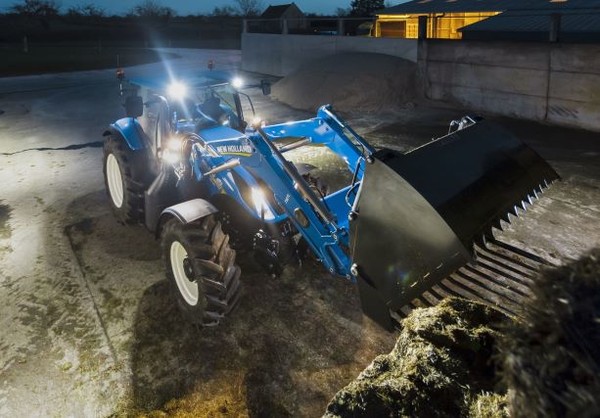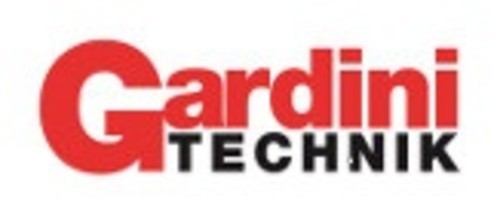
The front loader evolution
The front loader is probably the most important tractor accessory, significantly improving its multifunctionality. Technical progress has focused in particular on the automation of certain functions and safety in the management of suspended loads, among which the self-levelling of the lifting and lowering routines seems to be particularly useful
The front loader transforms the tractor into an efficient means of handling bulk and packaged materials, making it extremely useful for operations in the farm center and in certain production sectors, such as the forage industry.
A number of specialized manufacturers have been operating on the market for some time now, offering both models with their own factory denomination (also for retrofit installations) and ranges that are sold directly together with tractors, as original parts.
Anyway, technical progress has recently led to considerable improvements of this important implemen from a structural point of view and, above all, for hydraulic management.
The supporting frame
Although important, the front loader is still an implement of the tractor, and as such it requires specific adaptations for a correct, safe and efficient attachment to the machine body. In fact, both its own weight and, above all, the loads of the material handled must weigh on the vehicle in such a way as to maintain the stability of the whole at the best possible level, in all phases of handling and transport.
Consequently, special attention must be paid to the loader attachment frame. The leading manufacturers produce their loaders with sides connected to the tractor at 3 points, i.e. on the front and rear axles and on the clutch/gearbox assembly, as happens on industrial machinery specialized in lifting. This is to the advantage of high levels of rigidity and strength and in such a way as to bring the load as close as possible to the vehicle's center of gravity. More specifically, Sigma 4 of Forlì (FC) manufactures the sides in strong steel profiles with lenticular cross-section, which help to ensure a load distribution as homogeneous as possible. Their shape does not compromise in any way the maximum steering angle and does not have to force modifications to mudguards, 3-point hitch or driving platform.
Advanced features
Keeping the load level during lifting and lowering is a crucial requirement for loaders. This is both a question of overall stability and, above all, to avoid unwanted spillage of loose materials. Besides the classic manual function in which the operator keeps the load in a constant position running parallel to the ground through appropriate adjustment movements of the stick, today two self-levelling solutions are available, mechanical and hydraulic, that considerably simplify the operator's job. In the first case, a variable geometry parallelogram structure with very wide working angles is used ( which can also increase the lifting capacity). On the other hand, the hydraulic management involves suitably sized compensating cylinders which, in closed circuit, automatically send additional oil to the cylinders driving the end device (for example a bucket) during the lifting phase, thus keeping it levelled. The same occurs, but reversed, when the arm is lowered. As in the mechanical version, the compensating cylinders also increase the lifting force by about 10÷12%.
One of the loader most useful functions is the “anti-bump”, feature, namely the damping of the oscillations caused by the irregularities of the ground profile while transferring the loads carried by the implement. For this purpose, a hydraulic cylinder is usually used together with one or more nitrogen accumulators to absorb instantaneous stress, i.e. shocks and blows. Sigma 4 has been offering for some time the Genius system for this purpose. It consists of two membrane accumulators precharged at 30 and 70 bar respectively, located on the central crossbar of the loader, and protected by a dedicated cover. The evolution of the device has led to the development of Nebula, which compared to Genius provides a single accumulator preloaded at 65 bar rechargeable and placed inside the crossbar connection.
Basically, the damping action becomes more effective as the forward speed and load increase. In addition to clear operational safety benefits, these devices usually include a deactivation valve which proves useful when the task at hand requires high levels of operational precision.
A further function that makes the operator's job much easier is the "Return to level" offered by the German company Stoll. Basically, it involves the storage of a specific position of the that can be recalled by simply pressing a button through a specific sensor located on the loader's left lifting cylinder. If storage is activated, an additional valve diverts the oil that escapes during lowering. When the implement has reached the preset position, the sensor triggers the valve to close. This can prove useful in repetitive routines, saving time and stress. Not only recall of the preset position, but also quick emptying (e.g. of the bucket) can be activated electrically, as standard.
Terminal implements
The bucket is perhaps the most popular terminal implement that gets paired with the front loader. The most important features are strength, conformation and the type of steel used to build it. Particularly when the loads are high and adhere to the implement, such as earth and snow, the conical shape and the side walls diverging towards the mouth facilitate correct handling. Of particular importance is the so-called "cutting edge", i.e. the lower edge of the bucket, which must obviously be treated appropriately to resist wear (e.g. have a Brinnell 500 hardness). It must also feature a suitable shape for use, i.e. smooth for loading and unloading loose products, or fitted with ripper teeth for digging and levelling work. Meanwhile, the so-called "grippers" are designed to load, grip and hold both bulk and packaged materials during transport. The wide variety of options ranges from buckets with bite, fork or grapple to forks with grapple. The German company Stoll offers interesting solutions: a cutter for silage bales that can be hydraulically controlled directly from the driver's seat, and a bucket equipped with a strong retainer suitable for bulky materials. There is also a wide range of products for handling bales, whether cylindrical or large prismatic. In addition to the usual side grippers and lower bars for simple lifting, there is an interesting gripper with teeth for gripping, lifting and loading two bales simultaneously.
The range of attachments also includes, of course, a wide range of pallet forks, but also parts suitable for forestry use, such as the hydraulically operated fork or grapple suitable for loading and stacking logs.
Controls and visibility
The loader uses a practical joystick for its most efficient management that can be supplemented by buttons for special electrically controlled functions. The leading manufacturers offer different versions of joysticks, according to the range of movements available.
One of the most important requirements for front loaders is to rely on optimal visibility of both the loads being handled and the driving horizon. Manufacturers have paid close attention to this factor, improving both the loader's geometry and its overall dimensions. In fact, when not in use, the loader must not restrict the front view in any way to ensure safe driving in all conditions. Stoll also offers a kit with a camera and an additional LED headlamp for the best possible view of the working area for working in poor visibility conditions.








